- Products & Solutions
- Wireless InSite
Wireless InSite® 3D Wireless Propagation Software
Wireless InSite® is a suite of RF propagation models, providing 3D ray-tracing, fast ray-based methods, and empirical models for the analysis of site-specific radio wave propagation and wireless communication systems. Through its combined modeling, simulation, and post-processing capabilities, it provides efficient and accurate predictions of EM propagation and communication channel characteristics in complex urban, indoor, rural and mixed path environments.
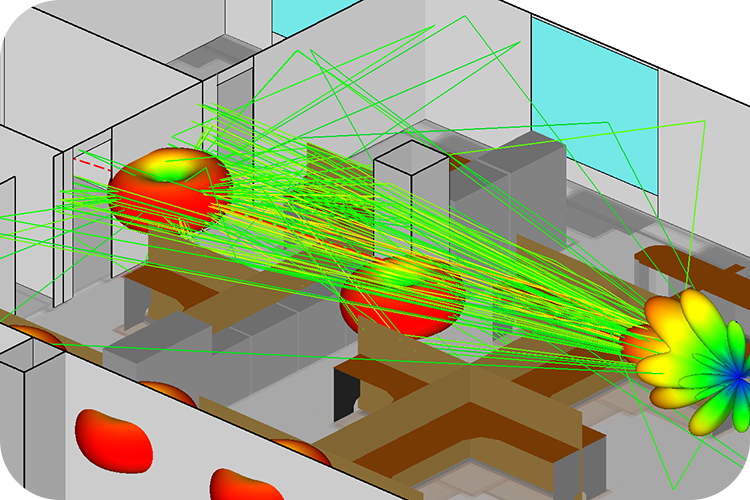
Innovations and Firsts
Explore a timeline of Wireless InSite product development innovations.
Learn More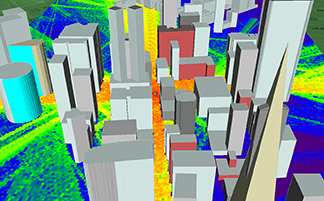
X3D Propagation Model
X3D is a 3D propagation model with no restrictions on geometry shape or transmitter/receiver height. This accurate model includes reflections, transmissions and diffractions along with atmospheric absorption and diffuse scattering. Supports frequencies up to 100 GHz.
Read More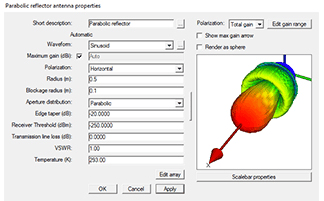
Antenna Modeling
Import measured antenna patterns, simulated antennas from XFdtd, or create textbook antennas for use in SISO, MIMO and Massive MIMO transmitter and receivers. Include frequency-specific pattern data to improve accuracy when using multiple bands or performing frequency sweeps.
Read More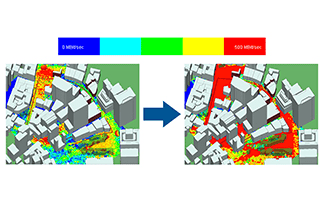
MIMO Beamforming & Spatial Multiplexing
Simulate MIMO antennas for 5G, WiFi and other technologies. Detailed multipath and mutual coupling effects are used with MIMO techniques such as beamforming, spatial multiplexing, and diversity to predict key channel metrics for one or more MIMO data streams.
Read More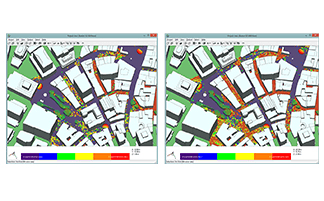
Communication Systems Analysis
Calculate SINR, throughput, theoretical capacity, and bit error rate (BER) to visualize and assess wireless device performance.
Read More
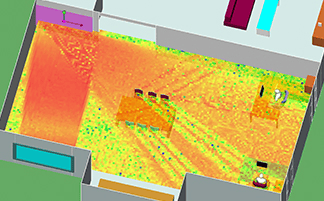
Engineered Electromagnetic Surfaces (EES)
Model an EES or single configuration of a metasurface-based Reconfigurable Intelligent Surface (RIS), and evaluate how it modifies the propagation environment to improve connectivity.
Read More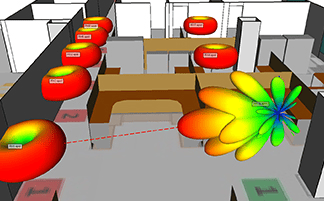
Diffuse Scattering
Capture effects of scattering on complex impulse response and received power (including cross-polarization) for mmWave applications.
Read More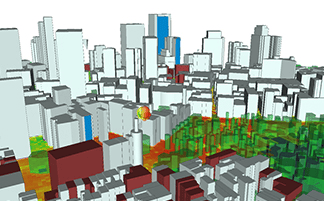
Feature Import
Support for KMZ, COLLADA, SHP, and DXF formats for building and object import. The Geospatial Abstraction Library is used for terrain import in DTED, DEM, and TIFF formats.
Read More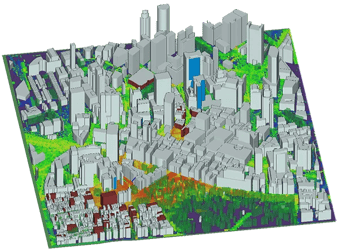
Geometry Caching
Wireless InSite’s X3D Propagation Model automatically caches processed geometry for later use, avoiding geometry processing time when multiple concurrent or subsequent jobs are run with the same geometry.
Read More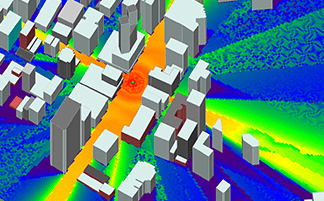
Fast Ray-Based Methods
2D site-specific propagation models designed for urban and long-range rough terrain applications.
Read More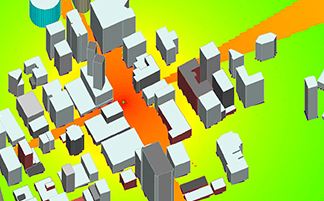
Empirical Propagation Models
Suite of empirical models designed for urban and indoor analysis.
Read More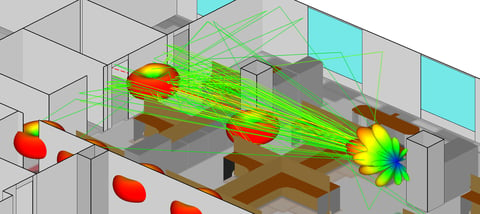
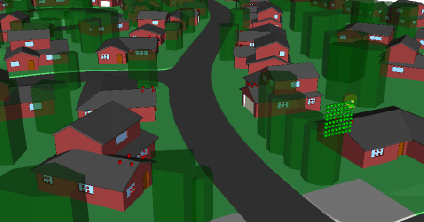
5G MIMO
Remcom’s EM simulation software provides a complete 5G solution, from system and MIMO antenna design through performance assessment in realistic, simulated environments, and planning for deployment in 5G networks. Our mission is to provide accurate solutions so customers can reliably predict how their systems will behave in the real world.
5G MIMO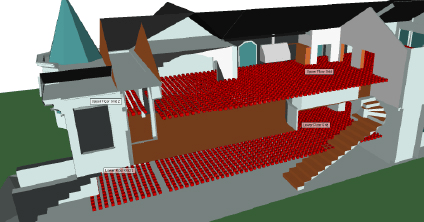
Antenna Placement
Remcom’s antenna modeling software tools ensure proper design and placement of antennas in almost any application. Our simulation tools can work alone or together for a complete analysis of how an antenna will perform.
Antenna Placement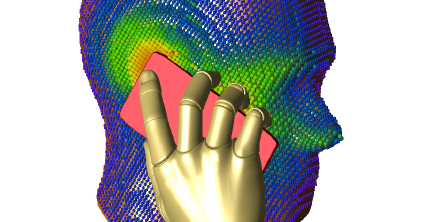
Mobile Device
Precision is key when designing today’s complex mobile devices, and engineers can’t afford discrepancies between device efficiency and simulation results. Remcom users see less than a 0.5 dB difference in device efficiency when compared to electromagnetic simulation results.
Mobile Device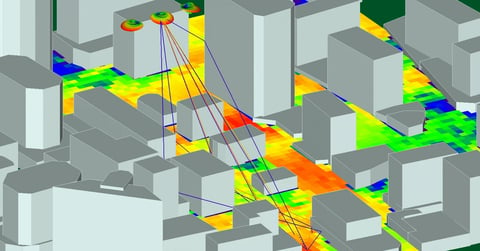
Wireless Propagation
Remcom's solutions for wireless propagation applications range from military defense to commercial communications. In addition to our wireless prediction software tools, our Propagation Software Division specializes in government contracting, developing custom software, and performing research and analysis.
Wireless Propagation-
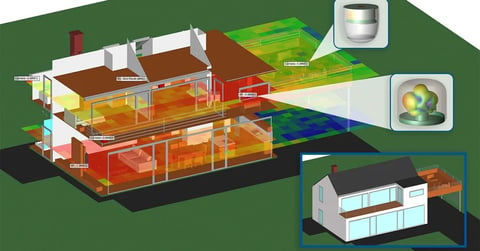
Webinars
Smart Home Device Design and WiFi Connectivity Using EM Simulation
This webinar demonstrates the strengths of Remcom’s XFdtd and Wireless InSite for designing and simulating smart home devices, analyzing propagation and beamforming capabilities, and assessing throughput performance of the devices via MIMO techniques.
Explore Resource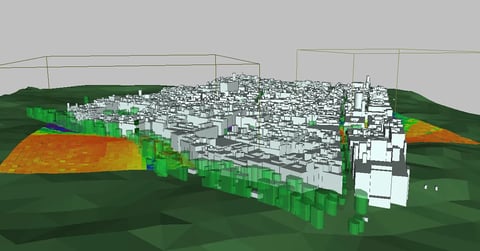
Webinars
Geometry Caching and Processing Optimizations in Wireless InSite
This webinar shows how geometry caching expedites repeated simulations within the same scene, such as with 5G small cell investigations, plus covers new optimizations that enable reductions in geometry processing times for urban and rural scenes.
Explore Resource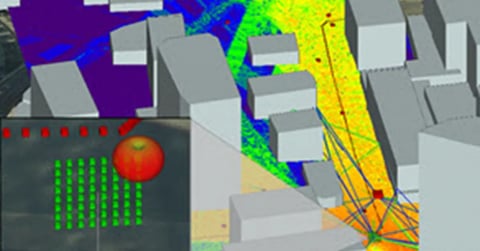
Webinars
Introduction to MIMO Capability in Wireless InSite
This webinar demonstrates the Wireless InSite workflow with a special focus on the new MIMO capability.
Explore Resource -
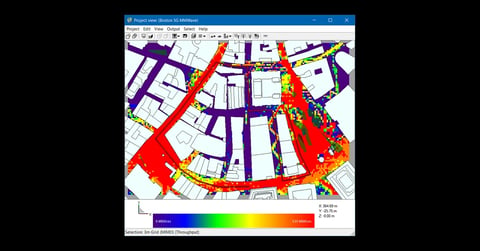
Application Examples
Throughput of a 5G New Radio FD-MIMO System in an Urban Area Using Custom Beamforming
This example demonstrates how a custom beamforming table can be used to model downlink data rates from three MIMO base stations for 5G New Radio in a section of Boston.
Explore Resource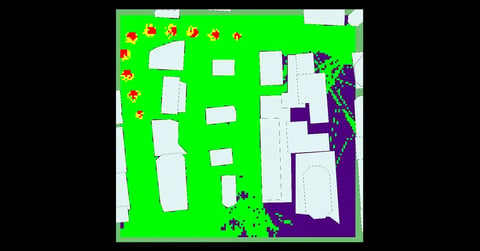
Application Examples
Maximum Permissible Exposure Analysis in an Urban Environment
Wireless InSite can model Maximum Permissible Exposure (MPE) to determine if there is a hazard to personnel from a particular high-power EM source. This output is displayed as color coded hazard zones within the GUI of Wireless InSite.
Explore Resource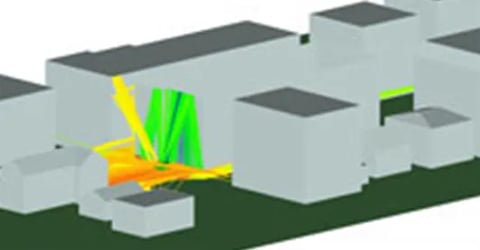
Application Examples
Overcoming Unknown Layout Limitations when Modeling Outdoor-to-Indoor Propagation
Wireless InSite has a hybrid method that combines the full 3D ray tracing model (X3D) with an empirical model called COST 231 to handle uncertainty with the interior layout of a floor plan. This example demonstrates setting up a typical scenario using the hybrid method.
Explore Resource -
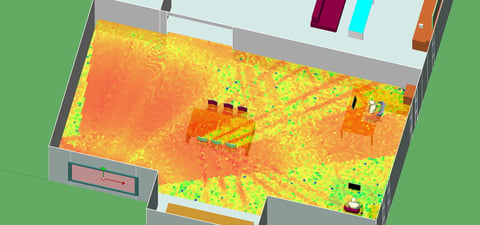
Videos
Using Wireless InSite for Engineered Electromagnetic Surface Modeling
This short video clip demonstrates how Wireless InSite models engineered electromagnetic surfaces (EES) and compares coverage improvement with diffuser and grating EES placements on a glass window or a wall.
Explore Resource
Videos
Constructive Interference at Work and Everyday Life
Tarun Chawla, Remcom's Director of Business Development, was a guest on the Sciencei Podcast. Tarun discussed the revolutionary technologies in wireless communications that have been developed during the past decades.
Explore Resource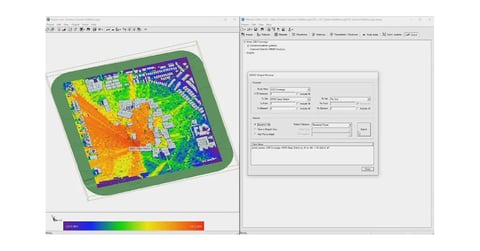
Videos
Wireless InSite Outdoor RF Propagation – Tutorial Series
In this video tutorial series, we walk through a step-by-step outdoor propagation analysis using Wireless InSite MIMO.
Explore Resource -

Publications
Product Development Timeline of Firsts
Explore a timeline of XFdtd and Wireless InSite product development innovations.
Explore Resource
Publications
How LunaNet Will Bring Internet-Like Capabilities To The Moon
In this article, John Oncea explains NASA's LunaNet project and how Remcom's participation will help to ensure reliable network performance on the Moon. LunaNet will empower NASA to explore the Moon and lay the foundation to support missions to Mars and beyond in the future.
Explore Resource
Publications
Investigation of EMF Exposure Level for Uplink and Downlink of 5G Network Using Ray Tracing Approach
In this paper, EMF exposure for 5G mobile networks in a dense urban environment is investigated using a raytracing approach for the uplink (UL) and downlink (DL).
Explore Resource -
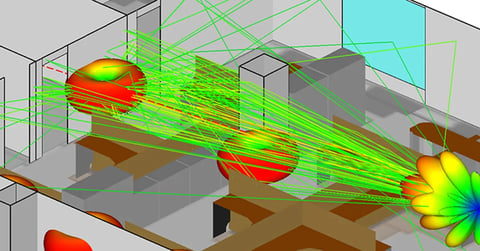
Brochures
Wireless InSite® 3D Wireless Prediction Software Overview
Wireless InSite® is a suite of ray-tracing models and high-fidelity EM solvers for the analysis of site-specific radio propagation and wireless communication systems.
Explore Resource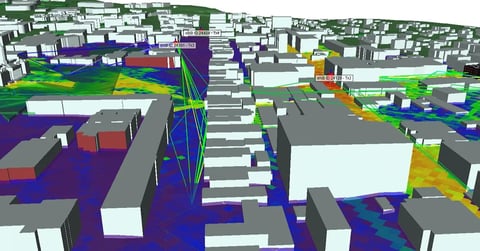
Brochures
Wireless InSite® 3D Wireless Prediction Software Brochure
Wireless InSite® is a suite of ray-tracing models and high-fidelity EM solvers for the analysis of site-specific radio propagation and wireless communication systems.
Explore Resource
Wireless InSite Specifications
Wireless InSite Capabilities
Contact us for additional capability information or to discuss your specific needs.
Wireless InSite Standard
Wireless InSite Professional
Bundles high-fidelity models from the Standard Version with fast ray-based and empirical models. Also includes additional specialized capabilities, such as:
-
Diffuse scattering, capturing signal contributions from rough surfaces
-
Engineered Electromagnetic Surfaces (EES), allowing modeling of passive EM metasurfaces designed to enhance wireless signal coverage
-
Adjacent path generation (APG) run-time optimization
-
APIs for select models, allowing users to develop custom applications
Wireless InSite MIMO
Bundles the features in the Professional version with MIMO capabilities, including MIMO array builder, optimized MIMO simulation, throughput and comms analysis, and channel results analyzer. Calculate MIMO channel, including degradation due to mutual coupling between antennas. Apply beamforming, spatial multiplexing, and diversity techniques to improve performance and predict throughput from multiple MIMO streams.
Modeling Capabilities
-
Suite of propagation models that span a range of fidelity and run times, including:
-
Models outdoor, indoor, indoor-to-outdoor and outdoor-to-indoor applications
-
Range of environments, from dense urban to rough, open terrain
-
Simulates antennas, polarization, and phase through full analysis of multipath propagation in complex environments
-
Simulates MIMO techniques, supporting traditional MIMO antennas up to large (massive) MIMO arrays
-
Communications analyzer calculates interference, SINR, throughput, capacity, and bit error rate
Geometry Generation and Manipulation
-
City geometry processing, including building association, simplification and error checking
-
Geometry caching for time savings when running multiple studies with the same geometry
-
Graphical city, indoor, terrain, and foliage editors
-
Conform foliage to terrain and define lower bounds for raised canopies
-
Translate, scale, rotate operations
-
Assignment of material properties
-
Scene cropping of terrain and urban features
Standard Features
-
Channel outputs include received power, electric field, delay spread, angles of arrival and departure, power delay profile, and various radiation hazard quantities
-
Communications analysis outputs include SINR, bit error rate, throughput, capacity, and other communications metrics
-
Calculations use 3D antenna patterns with full polarization and phase information
-
Generates time and frequency domain output
-
Identifies outages in coverage using the communication system analysis tool
-
Supports import of urban building data, floor plans, terrain, and soil and vegetation from standard formats
-
Overlays output on maps, aerial photographs, and 3D displays of buildings and terrain
Materials and Environmental Effects
-
Ability to model dielectric properties of construction materials, including multi-layered materials
-
Engineered Electromagnetic Surfaces (EES) model allows inclusion of passive metasurfaces used to enhance wireless signal coverage for 6G
-
Atmospheric absorption in X3D ray model extends to mmWave and above
-
Soil material properties, including built-in models based on sand, silt, and clay percentages
-
User-defined, tabulated reflection and transmission coefficients
-
Models for foliage penetration loss
Input/Output Visualization
-
Color displays of most output
-
Line plotting tools
-
Polar plots and 3D displays of antenna patterns
-
Plots of reflection and transmission coefficients by material
-
Color display of transient electric fields
-
"Movie Sequence" of transient fields vs. time
-
Export "Movie Sequence" to MPEG file
-
Export views and graphs to JPEG and TIFF files
High Performance Computing and Algorithmic Optimization
-
GPU acceleration and multi-threading for X3D Ray Model
-
Numerous ray-trace optimizations throughout modeling suite
-
Thread-safe Wireless InSite Real Time for multi-threaded API applications
-
Methods for execution of several models across multiple processors
Propagation Channel Outputs
-
Received power
-
Propagation paths
-
Path loss
-
Delay spread
-
Electric field magnitude and phase
-
Electric field vs. time and frequency
-
Strongest base to mobile
-
Time- and Direction-of-Arrival
-
Power delay profile
-
Doppler shift
-
Animated electric field movies
-
Received power, path loss
-
Visualize propagation paths
-
Complex Impulse Response
-
Direction of arrival
-
Direction of departure
Antenna Modeling
-
Transmitter/receiver sets defined through individual points, trajectories (routes), arcs, planar surfaces (vertical or horizontal), cylindrical surfaces, or spherical surfaces
-
Plane wave sources for modeling airborne and satellite based transmitters
-
Vertically, horizontally, and circularly polarized analytical antennas, or complex polarizations through antenna file import
-
Support for MIMO antennas, including large (massive) arrays
-
Ability to import multi-frequency antenna data and use in frequency sweep simulations
-
Antenna Pattern Importation: import antenna pattern data from Odyssey, MSI planet, or Remcom’s XFdtd, or convert from other solvers or measurements into Remcom’s standard 3D antenna pattern format.
MIMO Calculations
-
Optimized calculation of channel characteristics for large MIMO arrays
-
Array builder for building MIMO arrays with arbitrary patterns, rotations and spacings; optionally import antenna arrays from full-wave solver or other sources
-
MIMO beamforming, spatial multiplexing, and diversity techniques applied to compute signal characteristics of MIMO data streams
-
Use of multi-port S-parameters to capture degradation due to mutual coupling between antenna elements
-
Communications analysis computing SINR, throughput, and BER for multiple MIMO streams, as well as total for MIMO channel
-
Channel Data Analyzer for viewing, plotting and exporting MIMO output
-
CSV export of all MIMO results to allow further user analysis
MIMO Outputs
-
Received power and path loss
-
H-matrix
-
Complex Impulse Response
-
Direction of arrival
-
Direction of departure
-
RMS delay spread
-
Angle spread of arrival and departure
-
MIMO communication system outputs (see below)
Communication System Outputs
-
Interference and noise
-
Total power, strongest transmitter by received power, strongest transmitter
-
Signal-to-noise ratio (SNR), signal-to-interference ratio (SIR), signal-to-interference-plus-noise ratio (SINR)
-
Received signal strength indicator (RSSI)
-
Reference signal received power (RSRP, LTE only)
-
Reference signal received quality (RSRQ, LTE only)
-
Throughput for LTE, WiMAX, 802.11n, 802.11ac, 802.11ax, 5G NR and for user-defined protocols
-
Capacity (Shannon-Hartley)
-
Bit error rate (BER)
Geometrical Data Types
-
Cities
-
Terrain
-
Foliage
-
Floor plans
-
Objects
Geometry Data Import
-
Import DAE (COLLADA)
-
Import KMZ (COLLADA)
-
Import SHP
-
Import STL
-
Import DXF
-
Import STL
-
Import DEM, DTED, JDEM, SDTS, ASCII Grid, TIFF/BigTIFF/GeoTIFF for Terrain elevation data
-
Import TIFF and GeoTIFF
-
Import Global Land Cover Characteristics Database (GLCC) for vegetation land cover
-
Import Digital Soil Map (DSM) of the World
-
Raster-to-vector conversion
Diffuse Scattering
-
Degli-Esposti models
-
Lambertian
-
Directive
-
Directive with Backscatter
Enhanced Options
-
Monte Carlo to capture uncertainty in power or material parameters
-
Dispersive channel modeling via frequency sweeps
-
Maximum Permissible Exposure (MPE) - IEEE Standard C95.1-2005
-
Custom libraries of antennas, materials and waveforms
-
Support for Linux clusters
Wireless InSite Versions Comparison
System Requirements
[1] Performance typically improves with more cores (or logical processors); however, many systems with large numbers of logical processors have limitations on sustained peak utilization.
[2] GPU must be a CUDA capable card and compatible with NVIDIA OptiX 4.1.0. Based on the release notes for OptiX 4.1.0 and the timing of its release, CUDA capable cards with compute capability of 3.0 or higher should be supported. Contact NVIDIA support for specific recommendations.
XStream GPU Acceleration:
-
NVIDIA compute capability: 3.0 or higher [2]
GUI - Supported Platforms:
-
Microsoft Windows 7, Windows 8, Windows 10, and Windows 11, 64- bit
Computation Engine – Supported Platforms:
-
Microsoft Windows 7, Windows 8, and Windows 10, and Windows 11, 64- bit
-
Red Hat Enterprise Linux 6, 64-bit (and compatible systems)
Wireless InSite References
The following is a list of scientific and technical articles in which Remcom's software was used in the authors' research. We've included excerpts from the publication abstracts and offsite links to the original published content.
Channel Estimation for mmWave MIMO-OFDM Systems in High-Mobility Scenarios: Instantaneous Model or Statistical Model?
Classical linear statistical models, like the first-order auto-regressive (AR) model, are commonly used as channel model in high-mobility scenarios. However, compared to sub-6G, the effect of Doppler frequency shifts is more significant at millimeter wave (mmWave) frequencies, and the effectiveness of the statistical channel model in high-mobility mmWave scenarios should be reconsidered. In this paper, we investigate the channel estimation for mmWave multiple-input multiple-output-(MIMO) orthogonal frequency division multiplexing (OFDM) systems in high-mobility scenarios, with the focus on the comparison between the instantaneous channel model and the statistical channel model. For the instantaneous model, by leveraging the low-rank nature of mmWave channels and the multidimensional characteristics of MIMO-OFDM signals across space, time, and frequency, the received signals are structured as a fourth-order tensor fitting a low-rank CANDECOMP/PARAFAC (CP) model. Then, to solve the CP decomposition problem, an estimation of signal parameters via rotational invariance techniques (ESPRIT)-type decomposition based channel estimation method is proposed by exploring the Vandermonde structure of factor matrix, and the channel parameters are then estimated from the factor matrices. We analyze the uniqueness condition of the CP decomposition and develop a concise derivation of the Cramer-Rao bound (CRB) for channel parameters. Simulations show that our method outperforms the existing benchmarks. Furthermore, the results based on the wireless environment generated by Wireless InSite verify that the channel estimation based on the instantaneous channel model performs better than that based on the statistical channel model. Therefore, the instantaneous channel model is recommended for designing channel estimation algorithm for mmWave systems in high-mobility scenarios.
Spatially Consistent Air-to-Ground Channel Modeling via Generative Neural Networks
This article proposes a generative neural network architecture for spatially consistent air-to-ground channel modeling. The approach considers the trajectories of uncrewed aerial vehicles along typical urban paths, capturing spatial dependencies within received signal strength (RSS) sequences from multiple cellular base stations (gNBs). Through the incorporation of conditioning data, the model accurately discriminates between gNBs and drives the correlation matrix distance between real and generated sequences to minimal values. This enables evaluating performance and mobility management metrics with spatially (and by extension temporally) consistent RSS values, rather than independent snapshots. For some tasks underpinned by these metrics, say handovers, consistency is essential.
Toward Real-Time Digital Twins of EM Environments: Computational Benchmark of Ray Launching Software
Digital Twin has emerged as a promising paradigm for accurately representing the electromagnetic (EM) wireless environments. The resulting virtual representation of the reality facilitates comprehensive insights into the propagation environment, empowering multi-layer decision-making processes at the physical communication level. This paper investigates the digitization of wireless communication propagation, with particular emphasis on the indispensable aspect of ray-based propagation simulation for real-time Digital Twins. A benchmark for ray-based propagation simulations is presented to evaluate computational time, with two urban scenarios characterized by different mesh complexity, single and multiple wireless link configurations, and simulations with/without diffuse scattering. Exhaustive empirical analyses are performed showing and comparing the behavior of different ray-based solutions. By offering standardized simulations and scenarios, this work provides a technical benchmark for practitioners involved in the implementation of real-time Digital Twins and optimization of ray-based propagation models.
Millimeter-wave Radio SLAM: End-to-End Processing Methods and Experimental Validation
In this article, we address the timely topic of cellular bistatic simultaneous localization and mapping (SLAM) with specific focus on end-to-end processing solutions, from raw I/Q samples, via channel parameter estimation to user equipment (UE) and landmark location information in millimeter-wave (mmWave) networks, with minimal prior knowledge. Firstly, we propose a new multipath channel parameter estimation solution that operates directly with beam reference signal received power (BRSRP) measurements, alleviating the need to know the true antenna beam-patterns or the underlying beamforming weights. Additionally, the method has built-in robustness against unavoidable antenna sidelobes. Secondly, we propose new snapshot SLAM algorithms that have increased robustness and identifiability compared to prior art, in practical built environments with complex clutter and multi-bounce propagation scenarios, and do not rely on any a priori motion model. The performance of the proposed methods is assessed at the 60 GHz mmWave band, via both realistic ray-tracing evaluations as well as true experimental measurements, in an indoor environment. A wide set of offered results demonstrate the improved performance, compared to the relevant prior art, in terms of the channel parameter estimation as well as the end-to-end SLAM performance. Finally, the article provides the measured 60 GHz data openly available for the research community, facilitating results reproducibility as well as further algorithm development.
Lunar Surface Propagation Modeling and Effects on Communications
This paper analyzes the lunar terrain effects on the signal propagation of the planned NASA lunar wireless communication and sensor systems. It is observed that the propagation characteristics are significantly affected by the presence of the lunar terrain. The obtained results indicate that the terrain geometry, signal frequency, antenna location, and lunar surface material are important factors determining the propagation characteristics of the lunar wireless communication systems. The path loss can be much more severe than the free space propagation and is greatly affected by the antenna height, operating frequency, and surface material. Signal delay could be a concern in a crater environment. The signal delay due to multiple reflections from the lunar terrain can put a limit on the maximum data rate that can be achieved in the lunar environment. The analysis results from this paper are important for the lunar communication link margin analysis in determining the limits on the reliable communication range and radio frequency coverage performance at planned lunar base worksites. Copyright © 2008 by the American Institute of Aeronautics and Astronautics, Inc.
Localization in Digital Twin MIMO Networks: A Case for Massive Fingerprinting
Localization in outdoor wireless systems typically requires transmitting specific reference signals to estimate distance (trilateration methods) or angle (triangulation methods). These cause overhead on communication, need a LoS link to work well, and require multiple base stations, often imposing synchronization or specific hardware requirements. Fingerprinting has none of these drawbacks, but building its database requires high human effort to collect real-world measurements. For a long time, this issue limited the size of databases and thus their performance. This work proposes significantly reducing human effort in building fingerprinting databases by populating them with digital twin RF maps. These RF maps are built from ray-tracing simulations on a digital replica of the environment across several frequency bands and beamforming configurations. Online user fingerprints are then matched against this spatial database. The approach was evaluated with practical simulations using realistic propagation models and user measurements. Our experiments show sub-meter localization errors on a NLoS location 95% of the time using sensible user measurement report sizes. Results highlight the promising potential of the proposed digital twin approach for ubiquitous wide-area 6G localization.
Indoor Radio Map Construction via Ray Tracing With RGB-D Sensor-Based 3D Reconstruction: Concept and Experiments in WLAN Systems
This paper proposes an RGB-D sensor-aided ray-tracing simulation framework for indoor radio map construction that models indoor information, such as walls and obstacles, as a set of cuboids. Radio maps can accelerate indoor wireless systems, including resource optimization and fingerprint-based localization. We can construct an accurate radio map using a ray-tracing algorithm with precise indoor structures and obstacles information. However, it is challenging to acquire this indoor information because manual observations of these are expensive. To mitigate this critical drawback, we propose utilizing three-dimensional information obtained from RGB-D images for ray-tracing simulation. The proposed method semi-automatically models indoor information as cuboids from three-dimensional information with RGB-D images. The proposed method then feeds these cuboids into a ray-tracing simulation. Indoor experiments using wireless LANs over 5180 and 2452 MHz clarified that the proposed method accurately constructs the radio map.
NeWRF: A Deep Learning Framework for Wireless Radiation Field Reconstruction and Channel Prediction
We present NeWRF, a deep learning framework for predicting wireless channels. Wireless channel prediction is a long-standing problem in the wireless community and is a key technology for improving the coverage of wireless network deployments. Today, a wireless deployment is evaluated by a site survey which is a cumbersome process requiring an experienced engineer to perform extensive channel measurements. To reduce the cost of site surveys, we develop NeWRF, which is based on recent advances in Neural Radiance Fields (NeRF). NeWRF trains a neural network model with a sparse set of channel measurements, and predicts the wireless channel accurately at any location in the site. We introduce a series of techniques that integrate wireless propagation properties into the NeRF framework to account for the fundamental differences between the behavior of light and wireless signals. We conduct extensive evaluations of our framework and show that our approach can accurately predict channels at unvisited locations with significantly lower measurement density than prior state-of-the-art.
Ray Launching-Based Computation of Exact Paths with Noisy Dense Point Clouds
Point clouds have been a recent interest for ray tracing-based radio channel characterization, as sensors such as RGB-D cameras and laser scanners can be utilized to generate an accurate virtual copy of a physical environment. In this paper, a novel ray launching algorithm is presented, which operates directly on noisy point clouds acquired from sensor data. It produces coarse paths that are further refined to exact paths consisting of reflections and diffractions. A commercial ray tracing tool is utilized as the baseline for validating the simulated paths. A significant majority of the baseline paths is found. The robustness to noise is examined by artificially applying noise along the normal vector of each point. It is observed that the proposed method is capable of adapting to noise and finds similar paths compared to the baseline path trajectories with noisy point clouds. This is prevalent especially if the normal vectors of the points are estimated accurately. Lastly, a simulation is performed with a reconstructed point cloud and compared against channel measurements and the baseline paths. The resulting paths demonstrate similarity with the baseline path trajectories and exhibit an analogous pattern to the aggregated impulse response extracted from the measurements. Code available at this https URL
Multi-Frequency Channel Modeling for Millimeter Wave and THz Wireless Communication via Generative Adversarial Networks
Modern cellular systems rely increasingly on simultaneous communication in multiple discontinuous bands for macro-diversity and increased bandwidth. Multi-frequency communication is particularly crucial in the millimeter wave (mmWave) and Terahertz (THz) frequencies, as these bands are often coupled with lower frequencies for robustness. Evaluation of these systems requires statistical models that can capture the joint distribution of the channel paths across multiple frequencies. This paper presents a general neural network based methodology for training multi-frequency double directional statistical channel models. In the proposed approach, each is described as a multiclustered set, and a generative adversarial network (GAN) is trained to generate random multi-cluster profiles where the generated cluster data includes the angles and delay of the clusters along with the vectors of random received powers, angular, and delay spread at different frequencies. The mode can be readily applied for multi-frequency link or network layer simulation. The methodology is demonstrated on modeling urban micro-cellular links at 28 and 140 GHz trained from extensive ray tracing data. The methodology makes minimal statistical assumptions and experiments show the model can capture interesting statistical relationships between frequencies.
Hu, Y., Yin, M., Xia, W., Rangan, S., & Mezzavilla, M. (2022a, December 22). Multi-frequency channel modeling for millimeter wave and thz wireless communication via generative Adversarial Networks. arXiv.org. https://arxiv.org/abs/2212.11858
Neural-Network-Based Localization Method for Wi-Fi Fingerprint Indoor Localization
Despite the high demand for Internet location service applications, Wi-Fi indoor localization often suffers from time- and labor-intensive data collection processes. This study proposes a novel indoor localization model that utilizes fingerprinting technology based on a convolutional neural network to address this issue. The aim is to enhance Wi-Fi indoor localization by streamlining the data collection process. The proposed indoor localization model leverages a 3D ray-tracing technique to simulate the wireless received signal strength intensity (RSSI) across the field. By incorporating this advanced technique, the model aims to improve the accuracy and efficiency of Wi-Fi indoor localization. In addition, an RSSI heatmap fingerprint dataset generated from the ray-tracing simulation is trained on the proposed indoor localization model. To optimize and evaluate the model’s performance in real-world scenarios, experiments were conducted using simulated datasets obtained from the publicly available databases of UJIIndoorLoc and Wireless InSite. The results show that the new approach solves the problem of resource limitation while achieving a verification accuracy of up to 99.09%.
Zhu H, Cheng L, Li X, Yuan H. Neural-Network-Based Localization Method for Wi-Fi Fingerprint Indoor Localization. Sensors. 2023; 23(15):6992. https://doi.org/10.3390/s23156992
Comparative Characterization of Indoor VLC and MMW Communications via Ray Tracing Simulations
The demand for ultra-high-speed indoor wireless connectivity is ever-increasing, which poses unique challenges for the next generation wireless communication system design. This has prompted the exploration of higher frequency bands including millimeter wave (MMW) and visible light bands in addition to the conventional sub-6 GHz band. This paper provides a comprehensive comparison of the propagation channels of these frequency bands under the same indoor environment and scenarios. We adopt ray tracing techniques for site-specific channel modeling, which enables the consideration of the three-dimensional models of the indoor environment and objects inside. It allows us to take into account different frequencies, i.e., 2.4 GHz, 6 GHz, 28 GHz, 60 GHz, 100 GHz, and visible light band as well as different transmitter types, i.e., omnidirectional/directional antennas for radio frequency systems and indoor luminaries for visible light communications (VLC). For different frequencies under consideration, we obtain channel impulse responses (CIRs) and present the channel path losses for various user trajectories in indoor environments. Furthermore, we propose closed-form expressions for the cumulative distribution functions (CDFs) of received power levels for all frequency bands under consideration. Our results demonstrate that VLC channels exhibit lower path loss than that in MMW bands but higher than that of 2.4 GHz band. In addition, it is observed that VLC systems exhibit more sensitivity to shadowing and blockage effects. Our findings further indicate that the characteristics of the propagation channel are greatly influenced by the antenna type. For instance, using omnidirectional and rectangular patch antennas results in lower path loss compared to horn antennas, and this difference becomes more significant as the transmission distance decreases.
F. Aghaei, H. B. Eldeeb, L. Bariah, S. Muhaidat and M. Uysal, "Comparative Characterization of Indoor VLC and MMW Communications via Ray Tracing Simulations," in IEEE Access, doi: 10.1109/ACCESS.2023.3307186.
Supervised Learning Technique for First Order Multipaths Identification of V2V Scenario
In geometrical localization techniques, the propagated signal’s first-order multipath (FOMP) characteristics are used to calculate the location based on geometrical relationships. Utilizing the characteristics of higher order multipath (HOMP) results in a significant localization error. Therefore, distinguishing between FOMPs and HOMPs is an important task. The previous works used traditional methods based on a deterministic threshold to accomplish this task. Unfortunately, these methods are complicated and insufficiently accurate. The authors of this paper propose an efficient method based on supervised learning to distinguish more accurately between the propagated FOMP and HOMP of millimeter-Wave Vehicle-to-Vehicle communication in an urban scenario. Ray tracing technique based on Shoot and Bounce Ray (SBR) is used to generate the dataset’s features including received power, propagation time, the azimuth angle of arrival (AAOA), and elevation angle of arrival (EAOA). A statistical analysis based on the probability distribution function (PDF) is presented first to study the selected features’ impact on the classification process. Then, six supervised classifiers, namely Decision Tree, Naive Bayes, Support Vector Machine, K-Nearest Neighbors, Random Forest, and artificial neural network, are trained and tested, and their performance is compared in terms of HOMP misclassification. The effect of the considered features on the classifiers’ performance is further investigated. Our results showed that all the proposed classifiers provided an acceptable classification performance. The proposed ANN showed the best performance, whereas the NB was the worst. In fact, the HOMP misclassification error varied between 2.3% and 16.7%. The EAOA exhibited the most significant influence on classification performance, while the AAOA was the least.
Bakhuraisa YA, Abd Aziz AB, Geok TK, Abu Bakar NB, Jamian SB, Mustakim FB. Supervised Learning Technique for First Order Multipaths Identification of V2V Scenario. World Electric Vehicle Journal. 2023; 14(4):109. https://doi.org/10.3390/wevj14040109
Three Level Recognition Based on the Average of the Phase Differences in Physical Wireless Parameter Conversion Sensor Networks and Its Effect to Localization with RSSI
In recent years, there have been increased demands for aggregating sensor information from several sensors owing to the spread of the Internet of Things (IoT). However, packet communication, which is a conventional multiple-access technology, is hindered by packet collisions owing to simultaneous access by sensors and waiting time to avoid packet collisions; this increases the aggregation time. The physical wireless parameter conversion sensor network (PhyC-SN) method, which transmits sensor information corresponding to the carrier wave frequency, facilitates the bulk collection of sensor information, thereby reducing the communication time and achieving a high aggregation success rate. However, when more than one sensor transmits the same frequency simultaneously, the estimation accuracy of the number of accessed sensors deteriorates significantly because of multipath fading. Thus, this study focuses on the phase fluctuation of the received signal caused by the frequency offset inherent to the sensor terminals. Consequently, a new feature for detecting collisions is proposed, which is a case in which two or more sensors transmit simultaneously. Furthermore, a method to identify the existence of 0, 1, 2, or more sensors is established. In addition, the authors demonstrate the effectiveness of PhyC-SNs in estimating the location of radio transmission sources by utilizing three patterns of 0, 1, and 2 or more transmitting sensors.
Ito T, Oda M, Takyu O, Ohta M, Fujii T, Adachi K. Three Level Recognition Based on the Average of the Phase Differences in Physical Wireless Parameter Conversion Sensor Networks and Its Effect to Localization with RSSI. Sensors. 2023; 23(6):3308. https://doi.org/10.3390/s23063308
Millimeter-Wave Mobile Sensing and Environment Mapping: Models, Algorithms and Validation
In this article, the authors address the radio-based sensing and environment mapping prospects with specific emphasis on the user equipment (UE) side. We first describe an efficient ℓ1 -regularized least-squares (LS) approach to obtain sparse range–angle charts at individual measurement or sensing locations. For the subsequent environment mapping, we then introduce a novel state model for mapping diffuse and specular scattering, which allows efficient tracking of individual scatterers over time using interacting multiple model (IMM) extended Kalman filter and smoother. Also the related measurement selection and data association problems are addressed. We provide extensive numerical indoor mapping results at the 28 GHz band deploying OFDM-based 5G NR uplink waveform with 400 MHz channel bandwidth, covering both accurate ray-tracing based as well as actual RF measurement results. The results illustrate the superiority of the dynamic tracking-based solutions, compared to static reference methods, while overall demonstrate the excellent prospects of radio-based mobile environment sensing and mapping in future mm-wave networks.
C. Baquero Barneto et al., "Millimeter-Wave Mobile Sensing and Environment Mapping: Models, Algorithms and Validation," in IEEE Transactions on Vehicular Technology, vol. 71, no. 4, pp. 3900-3916, April 2022, doi: 10.1109/TVT.2022.3146003.
Deep Reinforcement Learning-Based Coordinated Beamforming for mmWave Massive MIMO Vehicular Networks
In this paper, the authors propose a novel deep reinforcement learning (DRL) based coordinated beamforming scheme where multiple base stations serve one mobile station (MS) jointly. The constructed solution then uses a proposed DRL model and predicts the suboptimal beamforming vectors at the base stations (BSs) out of possible beamforming codebook candidates. This solution enables a complete system that facilitates highly mobile mmWave applications with dependable coverage, minimal training overhead, and low latency. Numerical results demonstrate that our proposed algorithm remarkably increases the achievable sum rate capacity for the highly mobile mmWave massive MIMO scenario while ensuring low training and latency overhead.
Tarafder P, Choi W. Deep Reinforcement Learning-Based Coordinated Beamforming for mmWave Massive MIMO Vehicular Networks. Sensors. 2023; 23(5):2772. https://doi.org/10.3390/s23052772
Performance of Fingerprinting-Based Indoor Positioning with Measured and Simulated RSSI Reference Maps
This article presents a method of preparing reference RSSI distributions using computer simulations. The simulations were conducted using the ray tracing propagation model and the computationally less demanding multiwall model. The simulated RSSI distributions were tested using a location algorithm. Their performance was compared with that of measured RSSI maps. The results show that it is possible to replace the complex creation of reference maps with simulations using the ray tracing model or the multiwall model, both of which provide sufficiently accurate measurements (from the point of view of the user) of 1–2.5 m.
Kawecki R, Hausman S, Korbel P. Performance of Fingerprinting-Based Indoor Positioning with Measured and Simulated RSSI Reference Maps. Remote Sensing. 2022; 14(9):1992. https://doi.org/10.3390/rs14091992
Enabling Large Intelligent Surfaces With Compressive Sensing and Deep Learning.
Employing large intelligent surfaces (LISs) is a promising solution for improving the coverage and rate of future wireless systems. This paper proposes efficient solutions to LIS challenges by leveraging tools from compressive sensing and deep learning. First, a novel LIS architecture based on sparse channel sensors is proposed. In this architecture, all the LIS elements are passive except for a few elements that are active (connected to the baseband). Two solutions are then developed that design the LIS reflection matrices with negligible training overhead. In the first approach, the authors leverage compressive sensing tools to construct the channels at all the LIS elements from the channels seen only at the active elements. In the second approach, they develop a deep-learning-based solution where the LIS learns how to interact with the incident signal given the channels at the active elements, which represent the state of the environment and transmitter/receiver locations. They show that the achievable rates of the proposed solutions approach the upper bound, which assumes perfect channel knowledge, with negligible training overhead and with only a few active elements, making them promising for future LIS systems.
A. Taha, M. Alrabeiah and A. Alkhateeb, "Enabling Large Intelligent Surfaces With Compressive Sensing and Deep Learning," in IEEE Access, vol. 9, pp. 44304-44321, 2021, doi: 10.1109/ACCESS.2021.3064073.
Enhanced TOA Estimation Using OFDM over Wide-Band Transmission Based on a Simulated Model
This paper presents the advantages of using a wideband spectrum adopting multi-carrier to improve targets localization within a simulated indoor environment using the Time of Arrival (TOA) technique. The study investigates the effect of using various spectrum bandwidths and a different number of carriers on localization accuracy. Also, the paper considers the influence of the transmitters’ positions in line-of-sight (LOS) and non-LOS propagation scenarios. It was found that the accuracy of the proposed method depends on the number of sub-carriers, the allocated bandwidth (BW), and the number of access points (AP). In the case of using large BW with a large number of subcarriers, the algorithm was effective to reduce localization errors compared to the conventional TOA technique. The performance degrades and becomes similar to the conventional TOA technique while using a small BW and a low number of subcarriers.
Obeidatat, H.A., Ahmad, I., Rawashdeh, M.R. et al. Enhanced TOA Estimation Using OFDM over Wide-Band Transmission Based on a Simulated Model. Wireless Pers Commun (2021). https://doi.org/10.1007/s11277-021-09297-z
Deep Learning Coordinated Beamforming for Highly-Mobile Millimeter Wave Systems
Supporting high mobility in millimeter wave (mmWave) systems enables a wide range of important applications such as vehicular communications and wireless virtual/augmented reality. Realizing this in practice, though, requires overcoming several challenges. In this paper, a novel integrated machine learning and coordinated beamforming solution is developed to overcome these challenges and enable highly-mobile mmWave applications. Simulation results show that the proposed deep-learning coordinated beamforming strategy approaches the achievable rate of the genie-aided solution that knows the optimal beamforming vectors with no training overhead.
Characterization of mmWave Channel Properties at 28 and 60 GHz in Factory Automation Deployments
Future cellular systems are expected to revolutionize today's industrial ecosystem by satisfying the stringent requirements of ultra-high reliability and extremely low latency. Along these lines, the core technology to support the next-generation factory automation deployments is the use of millimeter-wave (mmWave) communication that operates at extremely high frequencies (i.e., from 10 to 100 GHz). However, characterizing the radio propagation behavior in realistic factory environments is challenging due to shorter mmWave wavelengths, which make channel properties be sensitive to the actual topology and size of the surrounding objects. For these reasons, this paper studies the important mmWave channel properties for two distinct types of factories, namely, light industry and heavy industry. These represent the extreme cases of factory classification based on the level of technology, the density and the size of the equipment, and the goods produced. Accordingly, we assess the candidate mmWave frequencies of 28 and 60 GHz for licensed-and unlicensed-band communication, respectively.
Addressing Deep Indoor Coverage in Narrowband-5G
Ubiquitous connectivity is a common requirement of many services considered in Fifth Generation (5G) communication systems. However providing network coverage or wireless connectivity becomes very challenging in deep-indoor scenarios such as underground parking lots where the total channel loss can easily exceed the maximum coupling loss (MCL) of the communication technology. We motivate the importance of deep coverage by conducting a representative site-specific realistic coverage analysis using ray tracing. The results show that existing cellular-based coverage-optimized technologies cannot achieve ubiquitous coverage in deep indoor/underground areas and highlight the need for dynamic multi-hop relaying in 5G MTC.
Effects of Crowd Density on Radio Propagation at 24 GHz in a Pedestrian Tunnel for 5G Communications
In this paper, the authors report the results of radio propagation characterization in a pedestrian tunnel with different crowd densities at 24 GHz using commercial ray-tracing software called Wireless InSite. The 3D empty tunnel and human body models we created using computer-aided design software and imported into Wireless InSite. The tunnel model is based on a pedestrian tunnel connecting Suria and KLCC, which is located in the heart of Kuala Lumpur. Five three-dimensional (3D) human body models with different levels of detail were developed and tested. The crowd densities investigated were 0, 0.05, 0.1, 0.15 and 0.2 people/ m2 which correspond to 0, 25, 50, 75, and 100 people, respectively, in the study area. The results show that the path loss exponent, log-normal shadowing’s standard deviation, and fluctuation in received power increase as the number of people increases. When the crowd density is above 0.1 people/ m2 , the path loss exponent of the large-scale path loss model is higher than that of the empty tunnel. The results of this study are also useful for understanding the effects of human crowds on millimetre wave propagation in indoor tunnel-like environments such as hallways, enclosed corridors, mines, and transportation tunnels. The findings contribute to increasing the effectiveness of network planning and deployment for 5G communication, especially in pedestrian tunnels.
I. H. P. Tai, H. S. Lim, K. S. Diong and K. A. Alaghbari, "Effects of Crowd Density on Radio Propagation at 24 GHz in a Pedestrian Tunnel for 5G Communications," in IEEE Access, vol. 11, pp. 40240-40248, 2023, doi: 10.1109/ACCESS.2023.3269813.
Machine Learning for Reliable mmWave Systems: Blockage Prediction and Proactive Handoff
The sensitivity of millimeter wave (mmWave) signals to blockages is a fundamental challenge for mobile mmWave communication systems. In this paper, we leverage machine learning tools and propose a novel solution for these reliability and latency challenges in mmWave MIMO systems. In the developed solution, the base stations learn how to predict that a certain link will experience blockage in the next few time frames using their past observations of adopted beamforming vectors. This allows the serving base station to proactively hand-over the user to another base station with a highly probable LOS link. Simulation results show that the developed deep learning based strategy successfully predicts blockage/hand-off in close to 95% of the times. This reduces the probability of communication session disconnection, which ensures high reliability and low latency in mobile mmWave systems.
Joint Optimization of Hybrid Beamforming for Multi-User Massive MIMO Downlink
Considering the design of two-stage beamformers for the downlink of multi-user massive multiple-input multiple-output systems in frequency division duplexing mode, this paper investigates the case where both the link ends are equipped with hybrid digital/analog beamforming structures. A virtual sectorization is realized by channel-statistics-based user grouping and analog beamforming, where the user equipment only needs to feedback its intra-group effective channel, and the overall cost of channel state information (CSI) acquisition is significantly reduced. Simulations over the propagation channels obtained from geometric-based stochastic models, ray tracing results, and measured outdoor channels, demonstrate that our proposed beamforming strategy outperforms the state-of-the-art methods.
60 GHz channel measurements and ray tracing modeling in an indoor environment
Millimeter wave (mmWave) communication has become a promising key technology of the fifth generation (5G) communication systems, and gained extensive interests. In this paper, we examine 60 GHz mmWave channels in an indoor office environment by means of ray tracing method. Based on geometrical optic (GO) and uniform theory of diffraction (UTD), ray tracing method uses computer simulation to approximate the radio wave propagation. The accuracy of ray tracing based simulation is guaranteed by a very detailed three-dimensional (3-D) environment model and proper material electromagnetic parameters. The simulation results including power delay profile (PDP) and normalized power angular spectrum (PAS) are compared with the channel measurement data which is processed by the space-alternating generalized expectation-maximization (SAGE) estimation algorithm. The comparison results indicate that ray tracing can be a useful and reliable method for characterizing 60 GHz channel properties.
Indoor millimetre-wave propagation channel simulations at 28, 39, 60 and 73 GHz for 5G wireless networks
Millimeter-wave indoor propagation characteristics including path loss models and multipath delay spread values for systems using directional and omnidirectional antennas are presented. The performance of the four 5G candidate frequencies, 28 GHz, 39 GHz, 60 GHz and 73 GHz, are investigated in line-of-sight (LOS) and non-line-of-sight (NLOS) scenarios using published real time frequency measurements conducted in indoor environments. Comparisons are made against simulation data obtained from the 3D Ray Tracing Wireless InSite software over Tx-Rx separations of 1.5 m to 62 m. In addition, frequency-dependent electrical properties, such as conductivity-σ and permittivity-ε, of common building materials are incorporated in the simulation. Results show material type influences propagation behavior of mm-waves due to reflections, diffractions and penetrations of walls and objects (obstacles).
Beamformed Fingerprint Learning for Accurate Millimeter Wave Positioning
With millimeter wave wireless communications, the resulting radiation reflects on most visible objects, creating rich multipath environments, namely in urban scenarios. The radiation captured by a listening device is thus shaped by the obstacles encountered, which carry latent information regarding their relative positions. In this paper, a system to convert the received millimeter wave radiation into the device’s position is proposed, making use of the aforementioned hidden information. Using deep learning techniques and a pre-established codebook of beamforming patterns transmitted by a base station, the simulations show that average estimation errors below 10 meters are achievable in realistic outdoors scenarios that contain mostly non-line-of-sight positions, paving the way for new positioning systems. Index Terms—5G, Beamforming, Deep Learning, mmWaves, Outdoor Positioning.
Angular and Temporal Correlation of V2X Channels Across Sub-6 GHz and mmWave Bands
5G millimeter wave (mmWave) technology is envisioned to be an integral part of next-generation vehicle-toeverything (V2X) networks and autonomous vehicles due to its broad bandwidth, wide field of view sensing, and precise localization capabilities. In this paper, we use ray tracing simulations to characterize the angular and temporal correlation across a wide range of propagation frequencies for V2X channels ranging from 900 MHz up to 73 GHz, for a vehicle maintaining line-of-sight (LOS) and non-LOS (NLOS) beams with a transmitter in an urban environment.
MmWave Beam Prediction with Situational Awareness: A Machine Learning Approach
Millimeter-wave communication is a challenge in the highly mobile vehicular context. Traditional beam training is inadequate in satisfying low overheads and latency. In this paper, we propose to combine machine learning tools and situational awareness to learn the beam information (power, optimal beam index, etc) from past observations. We consider forms of situational awareness that are specific to the vehicular setting including the locations of the receiver and the surrounding vehicles. We leverage regression models to predict the received power with different beam power quantizations. The result shows that situational awareness can largely improve the prediction accuracy and the model can achieve throughput with little performance loss with almost zero overhead.
Wireless InSite Professional Support
One year of Remcom Professional Support (RPS) is included with each product you purchase. Maintaining your license ensures that you will always have access to technical support and that you receive free product upgrades!
- Personal attention: speak directly with our engineers
- Product upgrades included
- Issue resolution, including escalation to higher management if necessary
- Toll-free phone and email support availability
Support is available from 9am-5pm Eastern Time, Monday-Friday.
